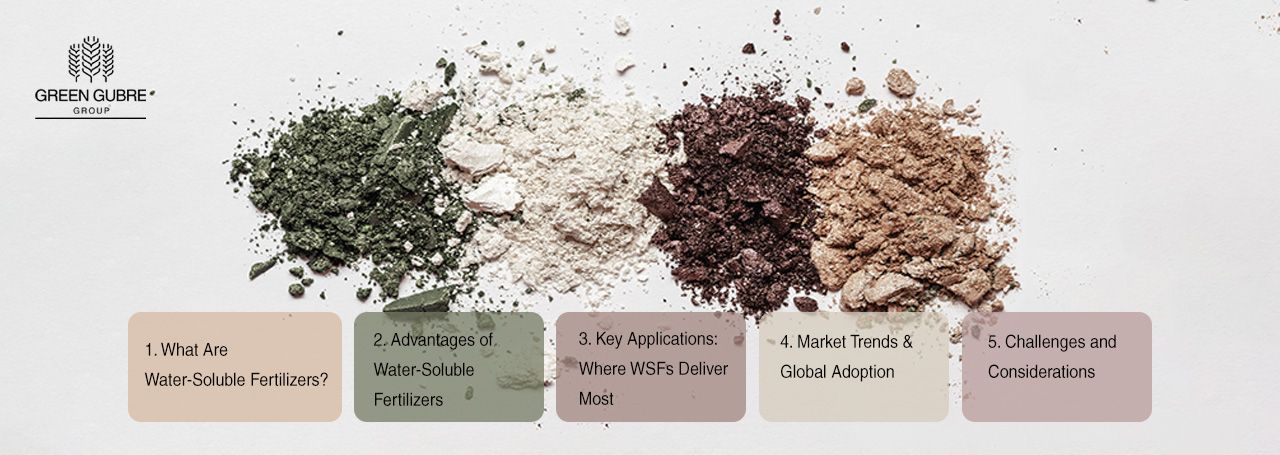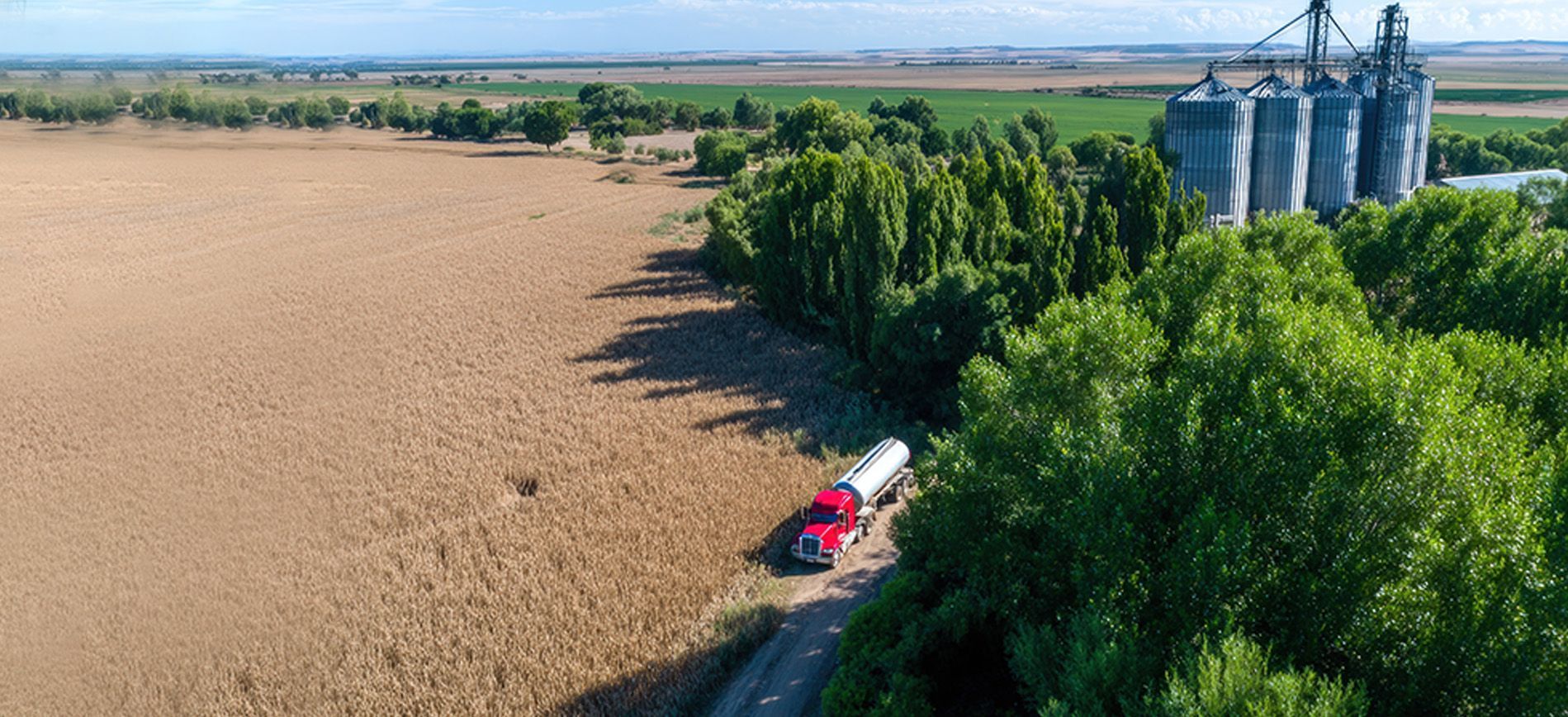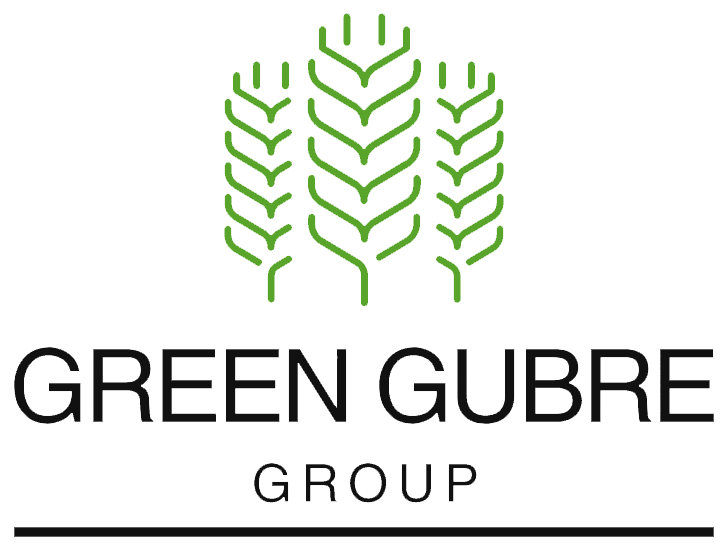Water-Soluble Fertilizers – Precision Nutrition for High-Value Crops
Water-Soluble Fertilizers – Precision Nutrition for High-Value Crops

Introduction: Feeding Crops with Precision
As agriculture evolves toward higher efficiency and sustainability, water-soluble fertilizers (WSFs) have become increasingly essential for modern growers—especially those cultivating high-value crops such as vegetables, fruits, flowers, and ornamentals. These fertilizers dissolve entirely in water, making them ideal for fertigation and foliar spraying, where precise nutrient timing and delivery are crucial to crop success. Amid growing water stress, land fragmentation, and the push for export-grade produce, WSFs are helping producers achieve better yield, quality, and profitability with fewer resources.
Source: International Fertilizer Association – Water-Soluble Fertilizers
1. What Are Water-Soluble Fertilizers?
WSFs are fertilizers that fully dissolve in water, leaving no residue, and allowing for seamless nutrient delivery via irrigation systems or foliar application. Unlike conventional granules, WSFs avoid losses through leaching or volatilization, as the nutrients are directly absorbed by plant roots or leaves in bioavailable form.
Common types include:
- Balanced NPK Solubles: e.g., 19-19-19, 20-20-20 for general vegetative and fruiting support
- Stage-Specific Blends:
- 13-40-13 for early root development
- 0-52-34 for flowering and fruit set
- 12-61-0 for boosting phosphorus intake
- Micronutrients: Chelated zinc (Zn), iron (Fe), boron (B), manganese (Mn), and copper (Cu)
- Secondary Nutrients: Calcium nitrate, magnesium sulfate, potassium nitrate for specific deficiencies or stress resilience
These formulations are tailored to crop growth stages, soil conditions, and regional nutrient profiles.
2. Advantages of Water-Soluble Fertilizers
WSFs offer transformative advantages for both open-field and protected cultivation systems:
- High Nutrient Use Efficiency (NUE): Nutrients are readily available, with minimal environmental loss.
- Precision Dosing: Farmers can deliver nutrients in sync with plant uptake curves, adjusting nutrient blends on a weekly or daily basis to optimize nutrient delivery and maximize crop yield.
- Reduced Fertilizer Waste: Accurate delivery via drip systems minimizes over-application.
- Compatibility with IPM: WSFs can be mixed with agrochemicals for combined fertigation and crop protection.
- Lower Environmental Footprint: Compared to broadcast fertilization, WSFs reduce runoff and leaching, resulting in a lower environmental footprint.
WSFs help farmers move away from generic fertilizer application to crop- and season-specific nutrition planning—a core principle of sustainable agriculture.
3. Key Applications: Where WSFs Deliver Most
WSFs have found strong adoption in intensive, high-return crop systems, including:
- Vegetables: Tomatoes, peppers, cucumbers, onions—where nutrient demand changes rapidly across stages
- Fruits: Citrus, grapes, bananas—requiring tight control of potassium, calcium, and micronutrients for quality
- Flowers and Ornamentals: Where color, stem strength, and leaf texture are tied to nutrition
- Greenhouses and Hydroponics: WSFs are indispensable in soilless cultivation
- Turf and Sports Lawns: Precision feeding ensures uniform growth and visual appeal
In these contexts,
fertigation with WSFs outperforms traditional methods, offering
up to 30–40% savings in fertilizer and significant yield improvements.
4. Market Trends & Global Adoption
- India: The government promotes fertigation under schemes such as 'Per Drop More Crop'. WSF use has grown by 15–20% annually over the past 5 years, primarily due to subsidies and micro-irrigation projects.
- China: The large greenhouse and orchard sectors are adopting WSFs with sensor-based fertigation systems for vegetables and fruit trees.
- MENA Region: Water scarcity drives the use of WSF in greenhouse vegetable cultivation and date palm production.
- Latin America: Export-oriented farms in Brazil, Chile, and Mexico utilize WSFs to meet international quality standards for fruits and horticultural products.
Source: ICIS – Specialty Fertilizer Market Outlook
The global WSF market is expected to surpass
$20 billion by 2030, driven by the adoption of
protected cultivation, water conservation, and enhanced export competitiveness.
5. Challenges and Considerations
Despite their advantages, WSFs require:
- Upfront Infrastructure: Installation of drip/sprinkler systems and fertigation units
- Knowledge Transfer: Farmers must be trained in solution mixing, pH control, and application timing
- Cost Sensitivity: Prices are 1.5–3x higher than standard NPK blends, though the cost per kg of absorbed nutrient is often lower
Improper use (e.g., overconcentration or incompatibility with other inputs) can lead to
crop burn,
clogged emitters, or
nutrient antagonism—making agronomic support essential.
Green Gubre Group: Your Partner in Soluble Solutions
At Green Gubre Group, we are committed to helping growers maximize efficiency through premium WSFs. Our services include:
- Custom-blended soluble NPK tailored to crop and region
- Micronutrient and calcium nitrate formulations for precision deficiency correction
- Fertigation consultation and training through agronomists
- Flexible packaging from 1kg to 25kg for smallholders and commercial farms
We empower growers with
climate-smart, yield-optimized solutions for better crop health and profitability.




